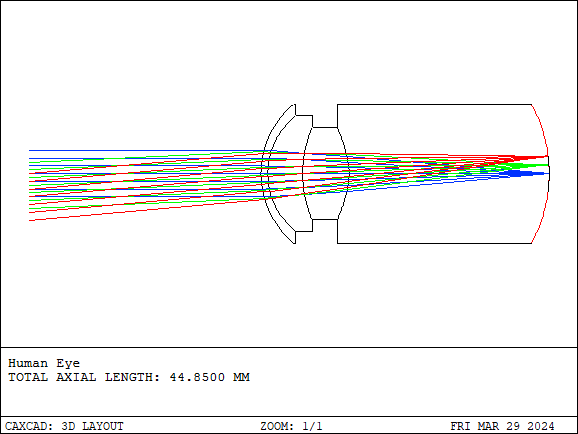The human eye is a vital component of the human visual system, responsible for receiving light signals and converting them into visual perception. The human eye consists primarily of the eyeball and the visual nerve. The eyeball includes structures such as the cornea, iris, lens, vitreous humor, and retina.

The cornea is a transparent structure at the surface of the eye that refracts light. The iris, the colored part of the eye, regulates the size of the pupil.
The lens is responsible for adjusting the focal length, allowing the eye to focus on objects at different distances. The vitreous humor fills the space between the lens and the retina, maintaining the shape of the eye and transmitting light signals.
The retina, located at the innermost layer of the eye, contains photoreceptor cells that convert light signals into neural impulses, which are then transmitted to the brain for processing.
The visual nerve carries these neural impulses from the eye to the brain, forming our visual perception. The human eye is a complex and intricate organ that plays a crucial role in our daily lives and perception.

Next, we'll create a model of the human eye in CAXCAD software and set the wavelength and weight of the eye's perception, based on the equivalent wavelength weight of the human eye's photopic response.

The diameter of the pupil of the human eye typically varies under different conditions. In bright environments, the pupil contracts to limit the amount of light entering the eye, helping to prevent overexposure and protect the retina. In dim environments, the pupil dilates to increase the amount of light entering the eye, enhancing visual perception. Under normal circumstances, the diameter of the human eye's pupil can vary from 1.5 millimeters to 8 millimeters. Here, we'll choose the typical diameter of 4mm.

Here are some general data on the main structures of the human eye:
- - Eye diameter: Approximately 24 millimeters.
- - Corneal diameter: Approximately 11.5 millimeters.
- - Lens diameter: Approximately 9.6 millimeters.
- - Pupil diameter: In bright environments, approximately 2 millimeters to 4 millimeters, and in dim environments, it may expand to approximately 6 millimeters to 8 millimeters.
- - Retinal area: Approximately 1100 square millimeters.
- - Retinal thickness: Approximately 0.5 millimeters to 0.2 millimeters, depending on the location.
- - Corneal thickness: Approximately 0.5 millimeters to 0.6 millimeters.
- - Lens thickness: Approximately 4 millimeters to 5 millimeters.
These data are based on general anatomy and medical literature and may vary slightly among individuals. Currently, there are over 5000 known models of the human eye, and we'll use the data from a typical standard model for our purposes.

The optical path of the human eye includes geometric spots and diffraction spots on the retina.

SPOT DIAGRAM

PSF

MTF

The resolution of the human eye: The resolution of the human eye on the retina reflects the resolution of observing objects. The human eye itself has a magnification ratio of about 1/15 to 1/16 at normal viewing distance. The resolution on the retina is typically around 110 lines per degree. Considering this magnification ratio, we can infer that the resolution of observing objects with the human eye is approximately 7 lines per millimeter. In this system, the numerical and modal resolution of the human eye model we obtained is approximately 110 lines, which closely matches the actual resolution. This is the structure of the standard human eye in CAXCAD.

